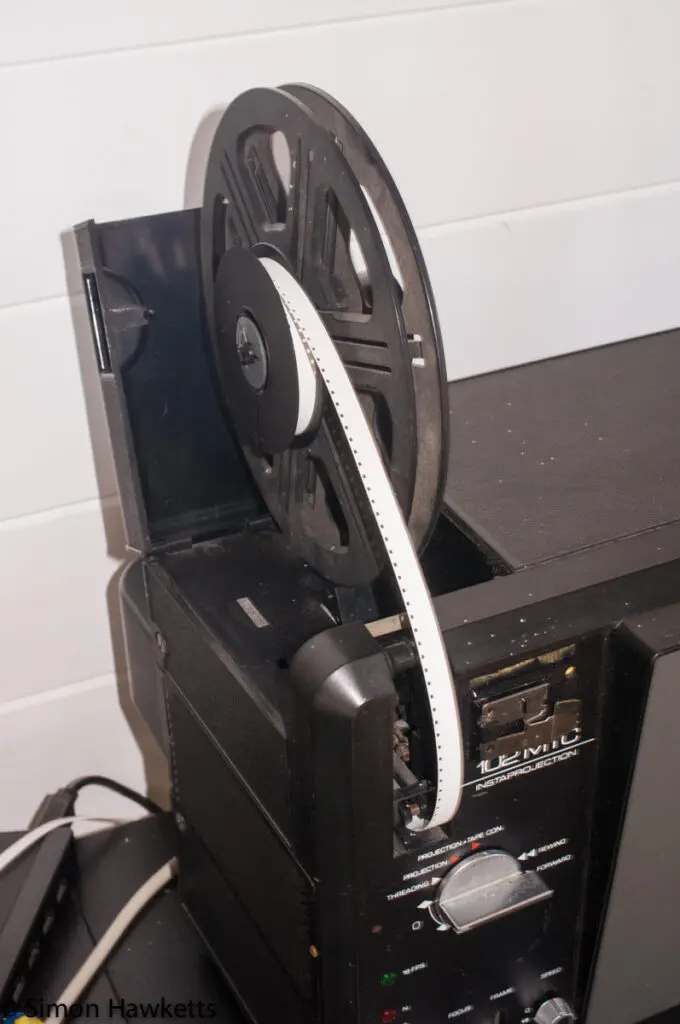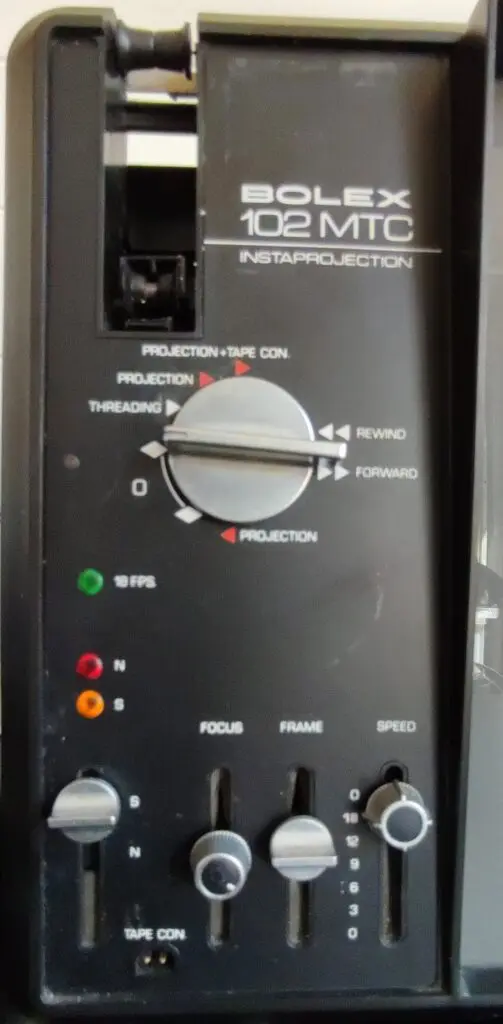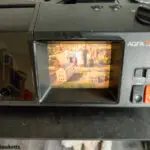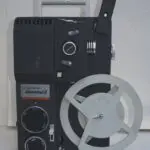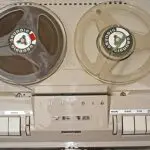The Bolex 102 MTC is a film projector which was one of the final iterations of projector before 8 mm film gave way to VHS tape as the preferred medium for home movies. Instead of having to set up a screen to project your home movies, the Bolex 102 has a built-in screen and looks very like a small TV set.
My Bolex 102 MTC film projector
I purchased my Bolex 102 MTC projector to use in my new Hobby room because it allows me to view / preview films in a much more convenient way than I was using previously.
Before I bought the Bolex, when I wanted to view a film I had to pull a projector down from the shelf, set up a stand with the projection screen on it, position the projector, thread the film, and then I could see what was on it (my primary reason for viewing the films is prior to publication on Vintage Home Movies, my site that publishes lost home movie footage). Because I don't have a reliable dual standard projector, I'd have to repeat the process when I moved from an 8 mm film to a Super 8 film.
Although this isn't complex, it did mean that I didn't often get round to viewing films, and I've not therefore published anything new on the Vintage Home Movies site for quite a while.
Using the Bolex the whole process is much, much simpler. It is left sitting on a cabinet in the office and all I need to do is lift the reel arm, fit the take-up spool and place the film on the arm. Once the film is fed into the auto-feed, the movie appears on the screen and I can watch it within a few seconds. Since it plays both formats, it's just a question of moving a switch to change from Super 8 to Standard 8.
So that's the reasoning behind the purchase - what was the actual unit like?
Well, the unit turned up a couple of days after I purchased it from eBay in a very well packaged box, and I'm glad to say that other than needing a good clean everything seems to be in order with the projector. I needed to get the back off and clean the screen and internal spaces, because there were some dirty marks and some eerie looking cobwebs which appeared when playing a film, and one bright streak which I still need to investigate, but generally it all looks good.
I did find that a previous owner had stuck a film end trimmer on to the front panel just next to the auto feed intake, which I removed but still appears in some of the photos in this article.
Pictures of the Bolex 102 MTC Projector
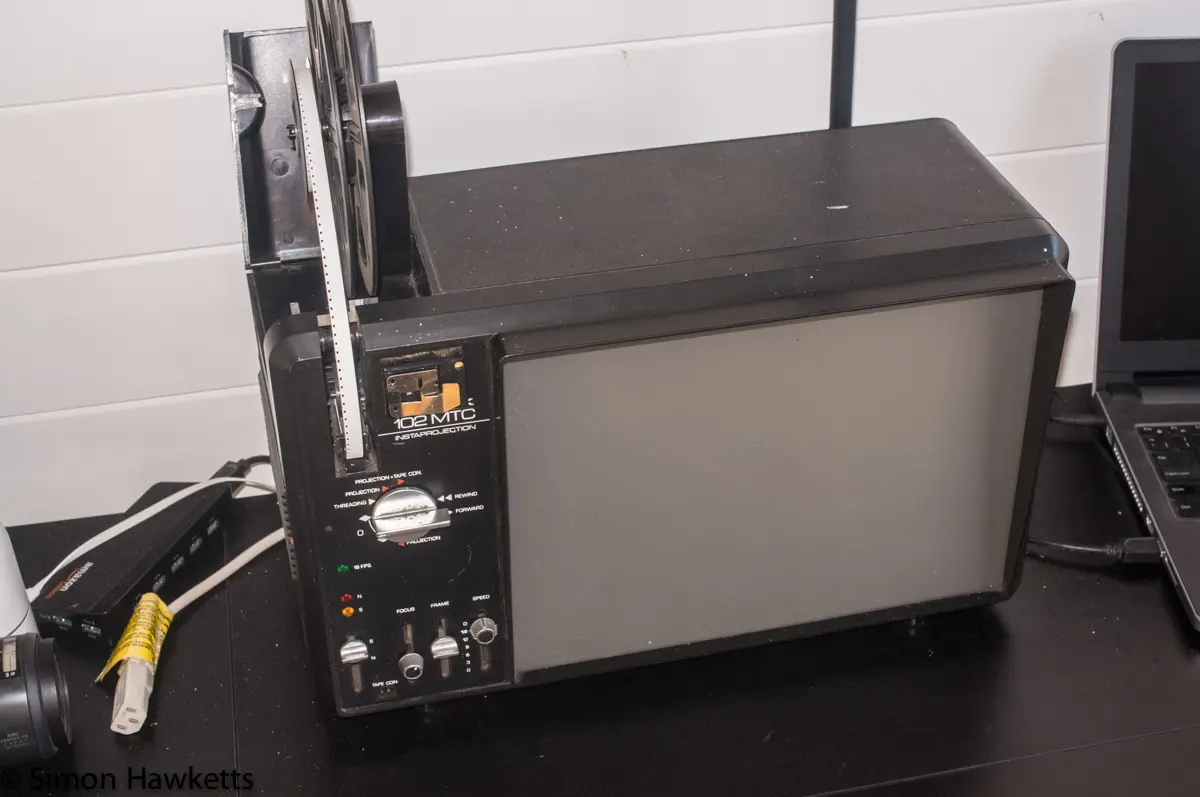

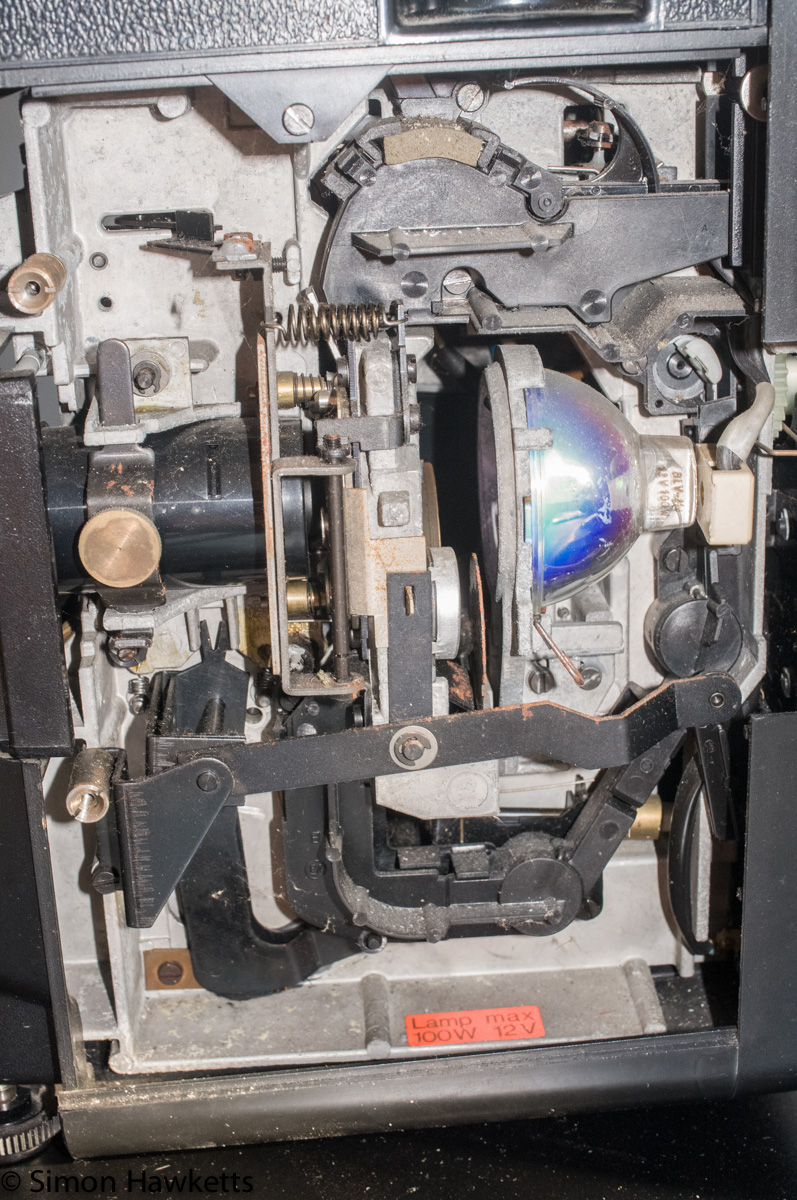

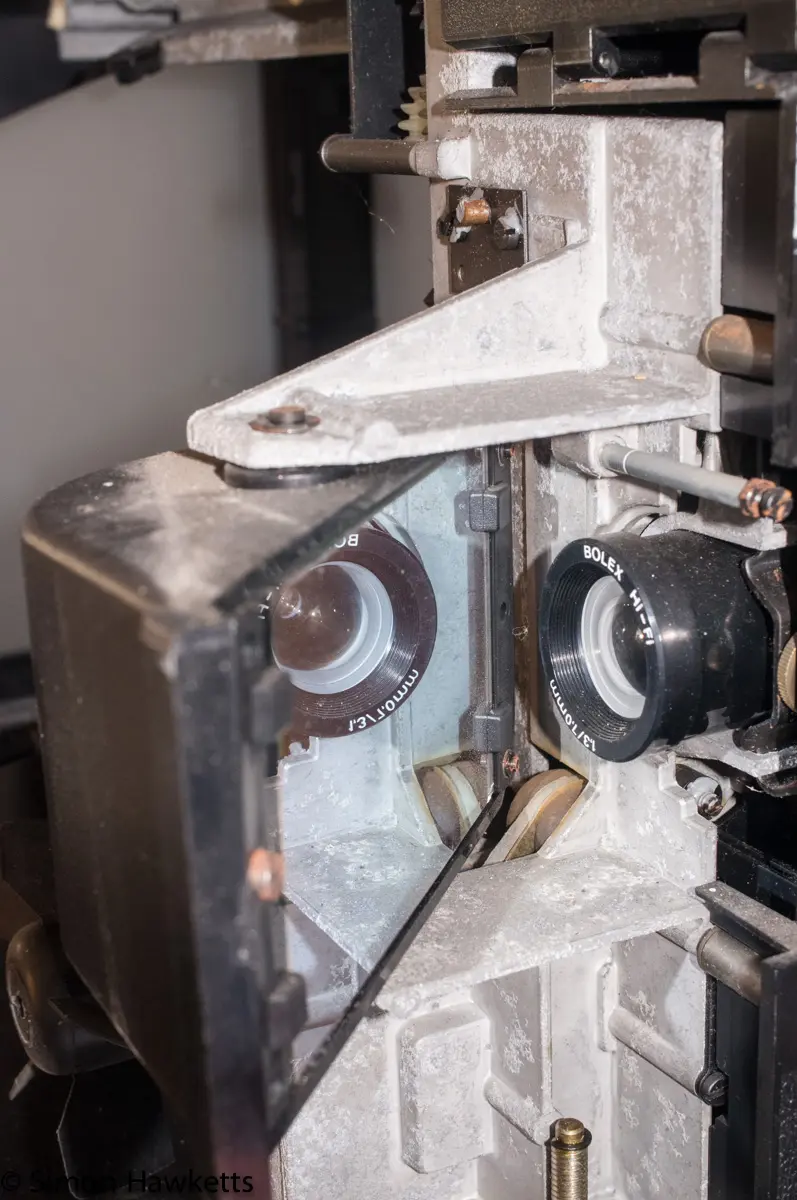
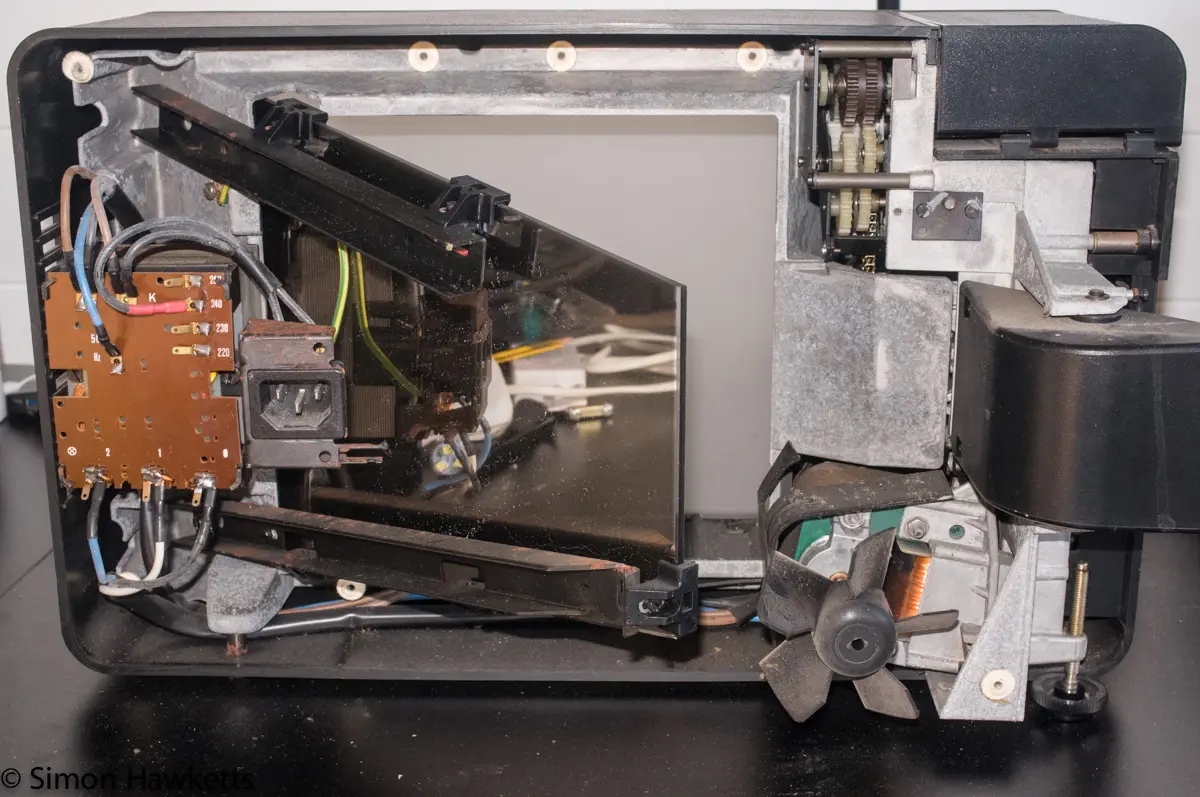
Description of the Bolex 102 MTC Projector
As I said in the opening paragraph, the projector resembles a small television and this was, of course, it's major selling point. Bolex were not the only company to produce this sort of design. Agfa also produced a kit which consisted of a cine camera and a cine projector with a built-in screen, but I think the screen on that system was smaller.
Eumig also produced a similar projector; In fact they produced a version of the Bolex 102 called the Eumig R 2000, and although I don't know which company actually designed and built the machine, I would think by looking at the internal engineering it was probably Bolex.
To use the Projector is really quite simple. There is a flap at the top which is opened to allow the single reel arm to be raised, and then the take-up spool is placed on the arm. The film to be projected is then also added to the same arm and the film is threaded into a feed slot in the front panel.
The main control is then turned to the 'Threading' position and the film is pulled into the projector and threaded through the film path and gate until it emerges from the top of the machine to get wound onto the take-up reel.
Although I've only had the projector a few days, I've so far found the auto-threading to be quite reliable, and I've not had any issues with it not working.
Once the film is on the take-up spool, the main control can be turned to the 'Projection' position and the lamp is turned on, and the picture appears on the screen.
As I said above, I had to clean out the body of my unit to remove a few cobwebs and dust spots in the inside of the screen, but once that was done the unit works very well and although the picture is not bright enough to be watched in normal daylight, as long as you can shade the actual display it can be watched with the blinds down in my office.
As well as projecting onto the internal screen, the projector can also project onto a large screen in a more conventional manner. The mirror block, which directs the light internally to the screen, can be turned to direct the light externally to a large screen it that's desired.
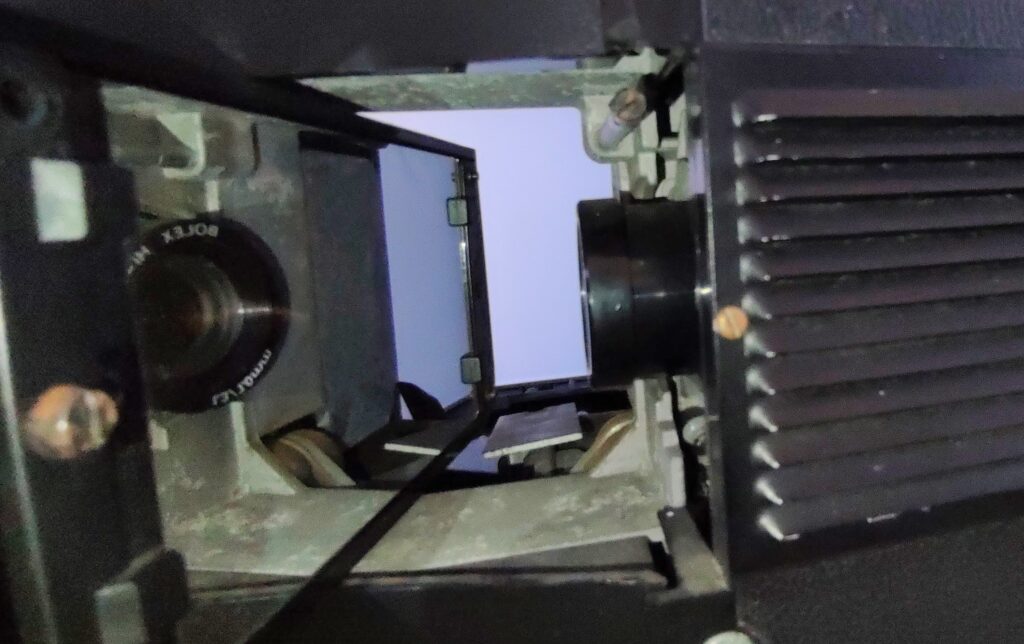
There was one adjustment I made to improve the picture on the internal screen, and that was to the small screw which sets the stopping point of the mirror.
I had to reset this so that standard 8 films were projected centrally on the screen. When I first used the unit a standard 8 film would be half lost on the right-hand side of the screen and I had to adjust this screw to reset the mirror angle.
Once the film has finished and has been fully wound onto the take-up spool, it can be threaded through a support arm on the back of the unit, onto the original reel and rewound using the front control set to 'Rewind'.
Unfortunately, my projector didn't come with a manual, and I've found it difficult to find a free manual for the projector online, so I'm not completely sure of all the options offered, but it seems that the projector could use a tape player to play a soundtrack to the films. There is an option called 'Projection + Tape Con' and there is a small electrical socket on the front panel marked Tape Con.
I guess this could control a tape recorder playing back a musical soundtrack, or the filmmaker could record a commentary to be played with the film, or really sophisticated filmmakers could record sound as they shot the film and synchronise the playback with the film.
Anyway, the other great thing about the Bolex 102 MTC is that it can project films shot in Super 8 or Standard 8 which for a film collector like myself is a very useful feature. This is controlled by a simple lever of the front panel which is marked S and N for Super and Normal.
There are also controls on the front panel for focus, framing and also to change the frame rate that the projector runs at which has a wide range of 18 fps down to 3 fps, although I find anything other than the rate the film was taken at to be a bit gimmicky.
So all in all I find this a very useful projector for my particular circumstances, but I suspect it would also have been useful at the time it was made for very similar reasons to those I faced. I would often think of sorting through a few films to see which are a good fit for the Vintage Home Movies site, but the effort involved made that not happen too often - hopefully now I'll get some of those films published.
Videos of Bolex 102 MTC
I took a couple of videos of the Bolex 102 MTC running on my mobile phone - the quality isn't great, but they do show the unit operating.
Bolex 102 MTC specifications
- Bolex 102 MTC dual standard Desktop projector
- Produced in about 1978
- Can project standard 8 and Super 8 film
- Projection to internal screen or external screen
- Forward or Reverse projection
- Small convenient size
- Multiple projection speeds
- Auto stop at the end of the film (assuming film is held on spool)
- Front panel framing and focus controls
